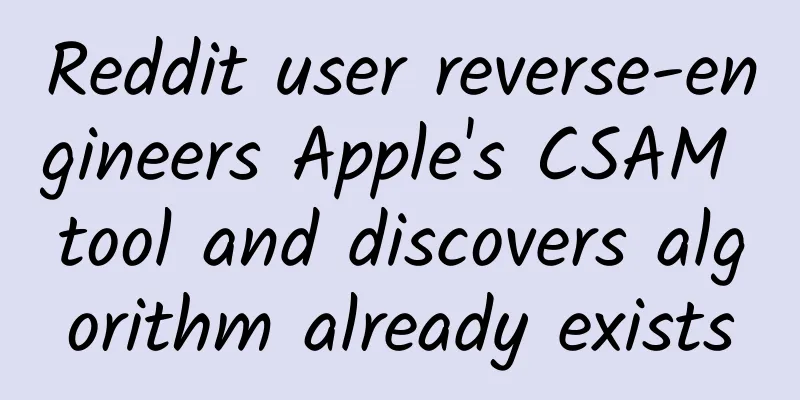Serious research: Thanos can't perform the snap that saves the universe

|
Written by: Wu Tingting Editor: Kou Jianchao Layout: Li Xuewei “Bang!” In the Marvel movie "Avengers", the villain boss Thanos can make half of the human population on Earth disappear with just a snap of his fingers. The gem-studded Infinity Gauntlet is full of mysterious power. However, if we take away the fantasy elements of the movie, can Thanos, wearing metal gloves, really snap his fingers? Recently, a research team from Georgia Institute of Technology and its collaborators gave the answer - the metal Infinity Gauntlet might just prevent Thanos from snapping his fingers! They got inspiration from this problem and after carefully studying the physics mechanism behind "snapping fingers" , they found that when snapping fingers, the human body will produce the highest acceleration discovered so far. The researchers said that this research results may help improve the simulation design of prosthetic limbs, especially in imitating the wide range of functions of human hands, and may also improve the manipulation capabilities of various robotic systems. The related research paper, titled "The ultrafast snap of a finger is mediated by skin friction", has been published in the scientific journal Journal of The Royal Society Interface. Why do you say that? In this study, Saad Bhamla, assistant professor in the School of Chemical and Biomolecular Engineering at the Georgia Institute of Technology, formed a team specifically to study "snapping fingers." When they saw Thanos snapping his fingers wearing metal gloves in the movie, they questioned: While skin friction may play a major role when snapping fingers with bare hands, Thanos may not be able to snap his fingers at all due to the frictional properties of the metal gauntlet. Figure | Comparison of friction and speed when fingers are covered with lubricated rubber cots (red), nitrile rubber (green), latex rubber (purple) and metal cots (blue) (Source: Paper) The results showed that when wearing metal finger gloves, the measured friction force was the smallest, and the maximum rotation speed was not as high as that when wearing bare hands. In other words, Thanos can't snap his fingers while wearing his Infinity Gauntlet! "The compression of the skin makes the system more forgiving," said Challita, one of the paper's authors. "Reducing the compressibility of the skin and the friction makes it harder to build up enough force in your fingers to snap them." So, another question is, does it become easier to snap your fingers when the friction is greater? Actually, the answer is no. As can be seen from the above figure, increasing the friction between the fingertips and the rubber covering will also reduce the snapping speed and rotational acceleration. Therefore, the researchers concluded that there is also a "sweet spot" for friction - too little friction and not enough energy to power the snap; while too much friction leads to energy dissipation because the fingers take longer to slide past each other, wasting the stored energy as heat. In fact, we are much more powerful than Thanos. Not only that, the scientists also carefully studied the ordinary finger snaps performed by humans without wearing any gloves and established a general framework to explain the mechanism behind it. In the experiment, the researchers measured that the maximum rotation speed of a bare-handed snap can reach 7,800° per second, and the rotation acceleration is as high as 1,600,000° per second squared. Although this rotation speed value has not yet reached the fastest rotational motion observed in humans, its instantaneous acceleration is the fastest human angular acceleration measured so far, almost three times the rotation acceleration of a professional baseball pitcher's arm. “When I first saw this data, I literally jumped out of my chair,” Bhamla said. “A finger snap takes only 7 milliseconds, which is more than 20 times faster than the blink of an eye, which takes more than 150 milliseconds.” In fact, humans have likely been snapping their fingers for hundreds of thousands of years, with ancient Greek art depicting the action as early as around 300 BC. Figure | (a) A piece of pottery from around 320 BC depicting a finger snap; (b) A composite image of the movement at different points in time when snapping the fingers, viewed from the side; (c) Measurements taken at the wrist, knuckles, and fingertips; (d) Illustration of the finger snapping movement. The researchers believe the results could offer a variety of opportunities for future research, including understanding why humans are wired to snap their fingers. Are humans the only ones who snap their fingers? The principle of snapping fingers is actually called cavity resonance in acoustics. When snapping your fingers, the thumb and middle finger squeeze each other, creating a lot of friction. To overcome this friction, the finger muscles need to provide a lot of force. When the two fingers are staggered, the middle finger gains a lot of momentum and hits the base of the thumb. At this point, the middle finger, ring finger, and base of the thumb form a cavity. The middle finger quickly presses the cavity, causing the air in the cavity to vibrate, creating a crisp "snap" sound. So the question is, are humans the only ones who can snap their fingers? In fact, although only humans have been found to snap their fingers, animals with similar hand structures to humans are theoretically likely to learn to snap their fingers. Chimpanzees, macaques and other animals have already made gestures such as "like" and "666". There is another animal that is clearly not a primate, but it may also have the ability to snap its fingers - our national treasure, the giant panda. Giant pandas have a total of 6 fingers. The "thumb" used to hold bamboo has no knuckles, only a piece of bone that grows on the outside of the real thumb, so it is called a pseudo-thumb. This bone is actually a specialized wrist bone, but it can grasp things as flexibly and conveniently as humans or monkeys. Therefore, giant pandas may also use their "pseudo-thumb" to replace our human thumb and snap their fingers beautifully. However, you don’t have to pay too much attention to which animals can snap their fingers. After all, it is more important to figure out whether you can snap your fingers. Reference Links: https://royalsocietypublishing.org/doi/10.1098/rsif.2021.0672 https://www.eurekalert.org/news-releases/934621 https://www.youtube.com/watch?v=ycfLurEqmj4&ab_channel=GeorgiaTech |
<<: Children raised by their fathers have higher IQs? You still underestimate your fathers
>>: Flex your fingers every day and take home the Nobel Prize
Recommend
Seven core questions about the Didi-Kuaidi merger: Will subsidies continue to be provided to new users?
Didi Dache and Kuaidi Dache jointly issued a stat...
Xianyu adds fans, how does Xianyu attract fans who are moms? Add WeChat conversation skills!
There are actually two mainstream methods for Xia...
Do computers have vision? Let computers "see" the world
1. The Birth of Vision In the billions of years s...
App promotion: Is winter coming? How to promote products at low cost!
First of all, what I want to tell you is that in ...
10 pictures tell you the correct way for traditional enterprises to embrace the Internet
Embracing the Internet is the general trend Inter...
Can't breathe when wearing a mask in summer? Try breathing like this
When the epidemic and high temperature overlap, c...
Whole wheat bread mixed with "bran" in the flour? Experts: Bran and bran are not the same substance
"Wholemeal bread is made by mixing bran, als...
5 user segmentation models, have you used them?
When building a user operation system, the most i...
Jiangnanhui Douyin clothing four-piece set burst instantly exploded into a god account + video deduplication
Jiangnanhui Douyin Tutorial: March 29th Clothing ...
A 6-year-old boy was infected with a rare "brain-eating worm" while swimming at the beach! There is currently no specific medicine, and the mortality rate is as high as over 90%!
"My original intention was to take my child ...
Do you have these New Year food customs at home?
New Year's Day by Wang Anshi (Song Dynasty) T...
Case Analysis: How to impact the Weibo topic list with 0 budget and link up 30 apps?
If you are working on new media in an APP, then c...
Product promotion from 0 to 1: How to acquire seed users?
Today we will introduce in detail how to write co...
The four major matrices of Tik Tok promotion and operation!
What are the ways to operate a matrix account? Ho...
Information flow, fan channel, creativity, account structure...you must have encountered these problems!
Question 1: How do you evaluate the effectiveness...









